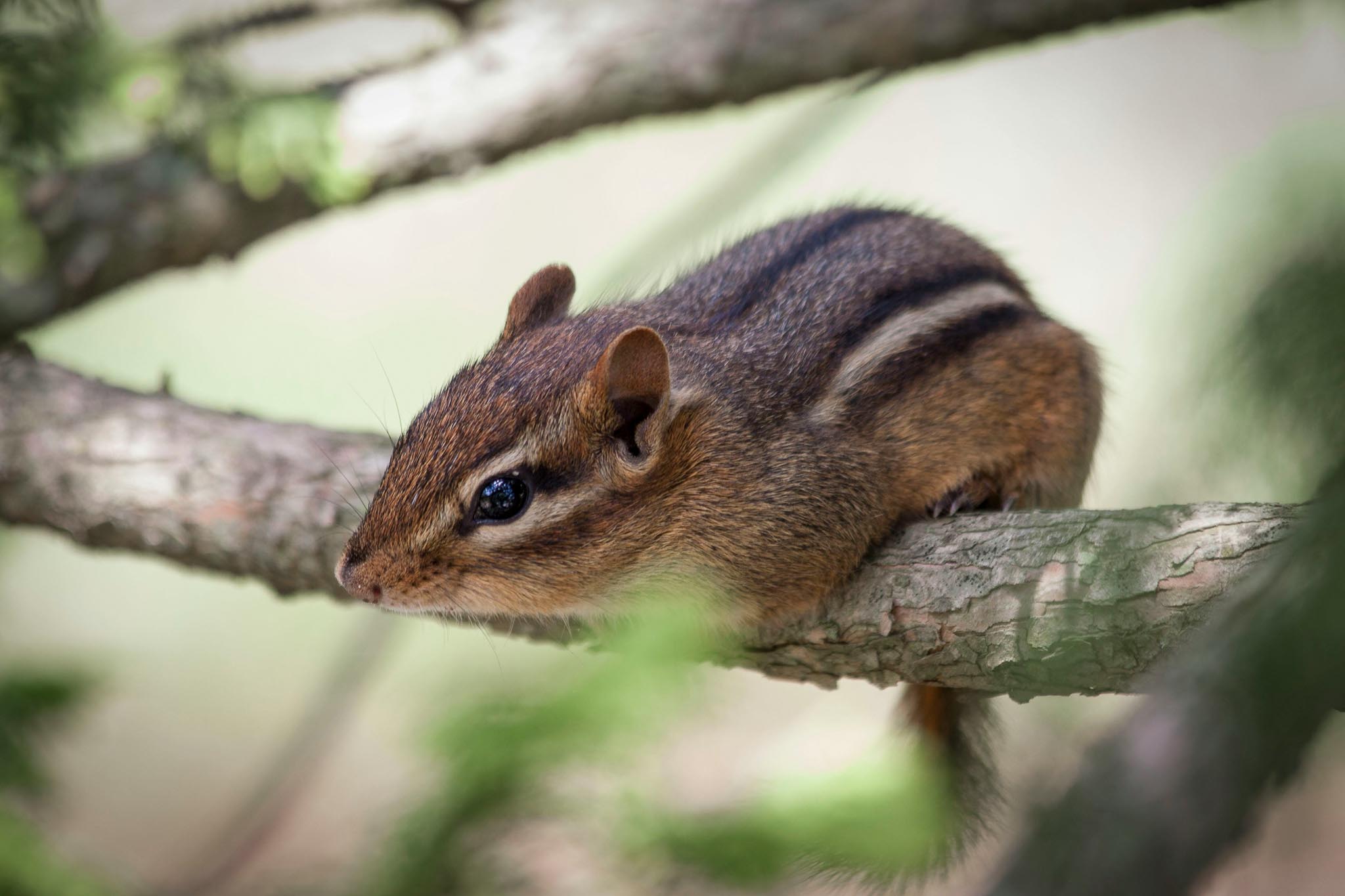Eastern Chipmunk
Introduction
The Eastern Chipmunk (Tamias striatus) is a small, striped rodent commonly found in Missouri, the Midwest, and throughout eastern North America. Though they are an important part of the ecosystem, their burrowing habits and foraging behaviors can lead to property damage, especially in gardens, landscaping, and occasionally inside homes.
Biology
Eastern Chipmunks belong to the squirrel family (Sciuridae) and typically measure 9–11 inches in length, including their tail. They are easily identified by their reddish-brown fur and five dark dorsal stripes separated by lighter stripes. In the wild, chipmunks generally live 2–3 years, though they can live longer in captivity.
Behavior and Ecology

Chipmunks are solitary and territorial, preferring wooded areas, suburban yards, and gardens with abundant cover. They are diurnal (active during the day) and spend much of their time foraging on the ground. Their distinctive cheek pouches allow them to transport food back to their burrows, which can span 8–30 feet underground with multiple entrances and chambers.
Signs of Eastern Chipmunk activity include:
-
Burrows: Small holes at the base of trees, logs, foundations, or brush piles, often with loose soil nearby.
-
Tracks: Tiny footprints with a hopping gait (hind feet land ahead of front feet) visible in soft soil, mud, or snow.
-
Food caches: Hidden piles of seeds, nuts, and fruit, especially in fall.
-
Chewed nuts: Gnaw marks on acorns, hickory nuts, and other hard-shelled seeds.
-
Droppings: Small, dark, cylindrical scat near burrows or travel routes.
-
Sounds & Sightings: High-pitched “chipping” calls and darting movements in and out of vegetation.
Reproduction & Life Cycle
Eastern Chipmunks breed twice a year: once in early spring and again in mid-summer. After a gestation period of approximately one month, females give birth to litters of 2–5 young. The young remain in the burrow for 6–8 weeks before emerging, quickly becoming independent and establishing their own territories.
Diet & Adaptation
These omnivorous rodents feed primarily on seeds, nuts, berries, fruits, and fungi, but will also consume insects and occasionally bird eggs. Their ability to store large amounts of food in their burrow chambers allows them to survive long winters. Adaptable and resourceful, chipmunks are quick to take advantage of bird feeders, gardens, and other human-provided food sources.
Trapping & Control
Chipmunks can become a nuisance when they burrow under patios, dig up gardens, or invade attics. Humane and legal control methods are strongly recommended:
Legal & Ethical Considerations
-
-
Always check local wildlife regulations before trapping. Some areas require permits or restrict lethal control.
-
Live trapping and relocation (when permitted) is the preferred humane method.
-
Trap Options
-
Live Traps: Small cage traps or Sherman traps (7–9 inches long) are ideal for humane capture.
-
Snap Traps: Rat or large mouse traps can be used but must be sensitive enough to trigger with a chipmunk’s weight. These should only be used where legal and when euthanasia is permitted.
Bait Recommendations
-
-
Peanut butter (a favorite because it sticks)
-
Sunflower seeds or birdseed mix
-
Nuts (walnuts, pecans)
-
Fresh fruit pieces (apple slices, berries)
-
Trap Placement
-
-
Place traps near burrow entrances, along fences, garden beds, or feeding areas.
-
Chipmunks are cautious, so use shaded, covered areas and avoid open spaces.
-
Monitoring & Release
-
-
Check traps at least twice daily to minimize stress.
-
Release live-trapped chipmunks at least 5–10 miles away in suitable wooded or brushy habitat (if allowed by law).
-
Prevention Tips
-
-
Seal gaps and holes in foundations, decks, and sheds.
-
Remove fallen fruit, spilled birdseed, and accessible food sources.
-
Use barriers or repellents around gardens and sensitive areas.
-